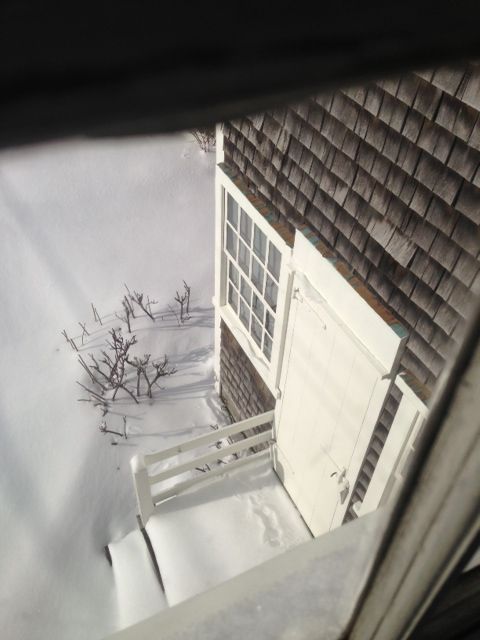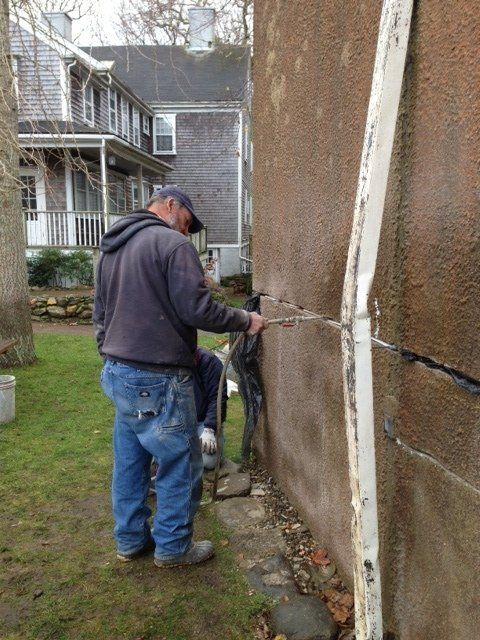And We Are Around the Front!
Well, I am rather excited. Much of the work to the rear of the MMA Library is now completed. The chimney re-pointed, the large crack repaired, and the portion of the wall that is part of the foundation has been repaired. Today, Wayne Morris, the mason, made the large cut into the crack that runs across the north façade of the building and around the east side all the way to where the east façade meets the southern façade. Now, he will be inserting the pillow anchors and filling them with the grout. I mentioned the process in a previous post. He will not insert all of the anchors side to side but leave a space between each one that is large enough for the insertion of pillow anchors in a few days’ or a week’s time. So every other section will be blank at first. This is to make sure they set properly. Once set, he can insert the remaining anchors and fill them. He is blazing through his special wet saw blade due to the toughness and thickness of the stucco on the building. We knew this would happen based on tests – a special saw had to be purchased for this project. The photograph here shows him filling the pillow anchors – this part is easy compared to the sawing as it requires a lot of his own strength to push the saw in continually to make the cuts (exhausting and not easy).
Morris will also be pulling out the first portion of steel that sits under the windows (the lintel) – it has rusted and rotted over all these years due to water damage. He will replace the steel in portions – the entire piece cannot be removed at once or else the support of the windows will be lost. The steel was specially ordered with specific specifications, including being dipped to prevent corrosion (which the original piece had as well but that was 80 plus years ago). Morris will also place in weep holes so that if there is any water that penetrates, it will have a means of escaping so that it does not sit on the steel and rot it over time as the last piece had happen.
Stay tuned – there is more MMA Library (soon to become Ecology Lab) preservation and conservation fun to come! (Yes, this is fun – learning and fun!)
JNLF
Recent Posts





